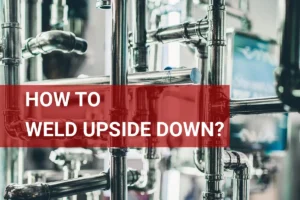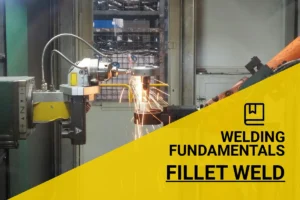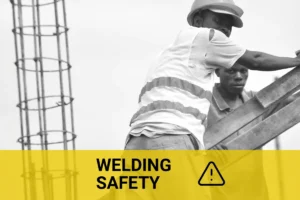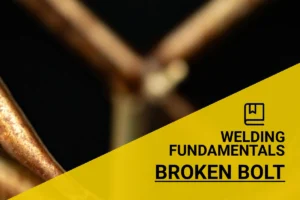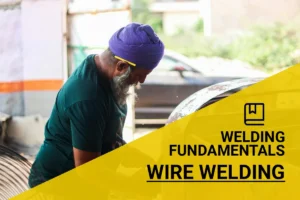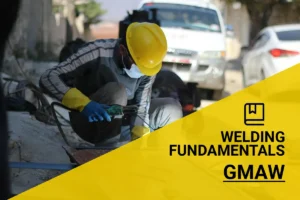Can You Weld Zinc Plated Steel? Understanding Techniques, Challenges, and Tips
Published on: June 11, 2025 | Last modified: March 4, 2025
By: Mark Carter
Now, can you weld zinc plated steel? It’s crucial to know because if you don’t follow the right steps, you could mess up the weld or ruin the coating. In my experience, I’ve seen projects fail due to careless welding on zinc plated surfaces, causing unexpected issues down the line.
In this article, I’ll cover various points: what zinc plated steel is, types of zinc plated steel and their weldability, prerequisites before you start, steps to weld zinc plated steel, precautions, different welding methods, factors influencing weldability, typical challenges, aftercare, inspection tips, benefits, applications, and when to consider alternative methods. For those wondering how to weld zinc plated steel, this guide will give you the insights you need.
Contents
- Can You Weld Zinc Plated Steel?
- What is Zinc-plated Steel?
- Types Of Zinc-plated Steel and Their Weldability
- Before You Start (Prerequisites)
- Steps to Weld Zinc-plated Steel
- Precautions
- Types Of Welding for Zinc-plated Steel
- Factors Affecting Weldability Of Zinc-plated Steel
- Typical Issues With Welding Zinc-plated Steel
- Aftercare, Inspection, and Advanced Tips for Welding Zinc-plated Steel
- Common Myths About Welding Zinc-plated Steel
- Welding Techniques for Optimal Results
- Benefits Of Welding Zinc-plated Steel
- Typical Applications Of Welded Zinc-plated Steel
- When to Try A Different Approach
- Frequently Asked Questions (FAQs)
- Conclusion
- References
Can You Weld Zinc Plated Steel?
Yes, you can weld zinc plated steel, but it’s tricky. The zinc coating can vaporize, creating harmful fumes. To weld effectively, remove the zinc coating in the weld area using a grinder or a wire brush for cleaner welds.
What is Zinc-plated Steel?
Zinc-plated steel is carbon steel with a protective layer of zinc. This coating helps prevent rust and corrosion. The electroplating process applies a thin layer of zinc, around 5 to 20 micrometers (0.0002 To 0.0008 Inches) thick. Zinc plating can increase the lifespan of steel by up to 50% in corrosive environments.
So, can you weld zinc-plated steel? I’ve asked myself this question before working on projects. From personal experience, welding can introduce complications if you’re not careful. Be aware of the fumes and ensure safety measures are in place.
I used it for building metal structures. Knowing how to weld zinc-plated steel properly is key to maintaining your project’s integrity. For instance, you don’t want zinc fumes released while welding; they can be harmful. My takeaway: pay attention to precautions before starting to weld zinc-coated steel; it might save you trouble in the long run.
Types Of Zinc-plated Steel and Their Weldability
What are the types of zinc-plated steel in welding?
Hot-dip Zinc-plated Steel
Hot-dip galvanizing involves dipping steel into molten zinc, creating a thick coating that offers strong corrosion resistance. However, welding this type can be tricky due to its high zinc content. Grind off the zinc around the weld area first to reduce harmful fumes and improve weld quality. It is crucial to understand the potential risks of welding galvanized steel, including its potential health hazards, which are discussed in detail in this guide on welding risks.
Electro-zinc Plated Steel
Electro-zinc plating uses an electric current to apply a thinner zinc layer, resulting in a smooth finish that’s less durable than hot-dip. You can weld this steel, but be cautious of the fumes. Clean the surface and use ventilation while working for better results.
Mechanical Zinc-plated Steel
Mechanical plating involves tumbling steel with zinc powder to create a uniform coating. Welding is possible, but be prepared for issues like warping. To avoid this, use lower heat settings and make short welds. A crucial aspect when building a welding setup is the proper design and function of its components, including understanding how to make a welding machine transformer.
Clear Zinc-plated Steel
Clear zinc is simply zinc plating without added colors, maintaining a bright appearance with moderate corrosion resistance. You can weld it! Wipe the surface clean before welding to prevent poor weld penetration.
Yellow Zinc-plated Steel
Yellow zinc features a cadmium-based pretreatment, providing a gold-like finish. It’s attractive but sensitive to heat. You can still weld it, but be aware of potential burn-off. To reduce damage, use MIG welding and keep the heat low.
We covered types of zinc-plated steel and their weldability here. Next, we will discuss prerequisites before starting.
Before You Start (Prerequisites)
What do you need to tackle the question: Can you weld zinc-plated steel?
- MIG Welder: You need a MIG welder, like the Hobart Handler 140. It’s essential for effective penetration and fusion of thin zinc-plated steel, which usually requires a lower heat setting.
- Welding Wire: Use ER70S-6 welding wire, such as Lincoln Electric’s 0.030 inch (0.8 Mm) gauge. This wire handles the zinc-coated surfaces well, minimizing spatter.
- De-Zincifier or Grinder: Get a de-zincifier or grinder, like the DeWalt DWE4887. You’ll need this to remove the zinc coating from weld areas to prevent toxic fumes during the process.
- Suitable Filler Material: Use gas flow absorbent filler, such as Harris Securities 30 ft Aluminum Tube. This is crucial for smooth joint formation and reducing porosity in the weld.
- Cleaning Solutions: Apply a zinc removal solution, like 3M Clean-N-Strip, for prep work. It’s important to eliminate oil, dirt, or residues before welding to ensure proper adhesion and safety.
You should now have a good understanding of prerequisites, materials, and safety. In the next part, we’ll discuss welding techniques.
Steps to Weld Zinc-plated Steel
Now, we’ll cover the steps to successfully weld zinc-plated steel. Follow these for the best results.
Remove Zinc Coating
First, strip the zinc coating from the area you plan to weld. Use an angle grinder with a flap disc to grind away the zinc effectively. Aim for a smooth surface to ensure good weld penetration. Any remaining coating can create dangerous fumes during welding. Typically, remove about 1–2 inches (2.54–5.08 Cm) around the weld joint. This helps eliminate contamination and strengthens the weld. Being thorough here pays off later! For those choosing between different electrodes, understanding the difference between 6010 and 6011 rods can enhance your welding results.
Set Up Your Welding Equipment
Use a MIG or TIG welder set to the right settings based on the thickness of your zinc-plated steel. For thinner material, 0.023-inch (0.6 Mm) filler wire works well. Adjust your amperage, usually around 140-180 A, depending on thickness. Test your settings on scrap pieces first, if you can.
Ensure your shielding gas is a mix—usually 75% argon and 25% CO₂. This prevents oxidation and controls heat. I had wire feed issues before getting this right!
Weld the Joint
Now, it’s time to start welding. Move the torch continuously along the joint for even heat distribution. Maintain a travel speed of about 6-12 inches per minute (15.24 Cm – 30.48 Cm) to avoid overheating. Welding too slowly causes warping and burns through the metal. For more accurate techniques, refer to our welding guidance and use a short arc length, about 1/8 inch (3.175 Mm), for better control and less spatter. Take breaks every few inches to cool down, especially with low-quality zinc!
Before welding on a vehicle it is crucial to know what to disconnect to ensure safety and protect the electrical system.
Post-weld Cleaning
Once you finish welding, immediately clean the weld area. Use a wire brush to remove any residual slag or oxides. This ensures a clean finish and prepares the surface for any finishing work. I usually spend 5-10 minutes on this—it’s well worth it.
Consider applying a zinc-rich primer after cleaning. This prevents rusting and maintains the coated look. Keeping that protection is key, especially if your project will face moisture.
That covers the steps for welding zinc-plated steel. Let’s now take a look at necessary precautions for the process.

Precautions
Let’s cover essential safety measures for welding zinc-plated steel.
- Ventilation: Ensure proper airflow to avoid inhaling harmful fumes. Using an air-purifying respirator, like the 3M 7502, can help.
- Heat Protection: Protect your skin from heat and sparks with reinforced gloves. Use leather gloves rated for over 300°F (149°C).
- Work Area: Keep the workspace clear of flammable materials to prevent fires. Maintain a clear zone of at least 10 feet (3 Meters) around your welding site.
- Surface Cleanliness: Cleaning zinc-plated steel improves weld quality and reduces fumes. Use a degreaser like WD-40 for effective cleaning.
Remember, prioritizing safety ensures your well-being and promotes quality work. We have now covered precautions for working with zinc-plated steel. Next, we will examine the types of welding suitable for it. If you’re interested in understanding how welding masks can be used in viewing eclipses, you might find it useful to explore welding masks and eclipses.
Types Of Welding for Zinc-plated Steel
Let’s explore the types of welding for zinc-plated steel: MIG Welding, TIG Welding, Stick Welding, Flux-Cored Arc Welding, and Laser Welding.
MIG Welding
MIG (Metal Inert Gas) welding is an excellent choice for zinc-plated steel. It uses a continuous wire feed as the electrode and an inert gas, usually Argon or CO2, to shield the weld. This process is quick and suitable for thicker materials, typically 1/16 inch (1.6 Mm) and above, making it a popular method for various steel welding applications.
Knowing the specific electrode classifications can significantly enhance the weld quality and ensure the correct methods are applied, as detailed in understanding electrode E316-16.
.
TIG Welding
TIG (Tungsten Inert Gas) welding provides precision when joining zinc-plated steel. It uses a non-consumable tungsten electrode and a filler rod. For thin materials, like those under 1/16 inch (1.6 Mm), TIG works well, though it’s generally slower than MIG.
Stick Welding
Stick welding, or Shielded Metal Arc Welding (SMAW), uses coated electrodes. This method produces significant heat but can create slag that adheres to the zinc. It’s ideal for outdoor welding but is less tidy and harder to control than other methods.
Flux-cored Arc Welding
Flux-Cored Arc Welding (FCAW) is effective for thicker zinc-coated steel. It uses a tubular wire filled with flux. It’s suitable for outdoor welding and can handle dirty or rusted surfaces, often used in heavy-duty applications. Similarly, exploring methods of MAG welding can enhance your understanding of advanced welding techniques.
Laser Welding
Laser welding utilizes focused beams of light to melt and join metals, including zinc-plated steel. It’s precise and ideal for thin metal sheets. However, it’s typically more expensive and requires specific equipment, making it less common. If you’re interested in exploring alternative methods for creating welding equipment with limited resources, you might find it useful to learn about making a welding machine using only a 12V battery.
Factors Affecting Weldability Of Zinc-plated Steel
What factors influence the welding of zinc-plated steel? Here are some key points.
Thickness Of the Zinc Coating
The thicker the zinc coating, the more problems you’ll encounter during welding. A coating over 25 µm (0.001 Inch) can impede proper fusion.
Type Of Welding Process
MIG and TIG welding are common methods, but each has challenges with zinc. For instance, MIG welding may produce more fumes, affecting health and visibility.
Base Metal Type
Different grades of steel influence weldability. Ensure compatibility with the zinc, as varying steel types can change the melting point.
Welding Heat Input
Excess heat can destroy the zinc coating, causing it to vaporize and create harmful fumes. Keep your heat input between 200-300 °C (392-572 °F) for best results.
Presence Of Contaminants
Grease, oil, or rust can weaken the weld joint. Always clean the surfaces before welding to ensure a strong bond and reduce the risk of defects.
Typical Issues With Welding Zinc-plated Steel
Let’s look at the unique issues related to zinc-plated steel.
Zinc Fume Generation
Zinc-plated steel produces toxic fumes when heated. Symptoms include throat irritation. Always work in well-ventilated areas and use a respirator to prevent this.
Inadequate Joint Strength
Zinc-plated steel may have weak joints due to surface contamination. Clean the steel thoroughly before welding for better adhesion.
Porosity in Welds
Welds can trap gas pockets in zinc-plated steel, creating weak spots. Look for holes or bubbles in the weld area. Use proper techniques to control heat during welding.
Excessive Spatter
Zinc-plated steel can produce more spatter while welding. You’ll see small beads near the weld. Adjust your voltage and travel speed to reduce spatter.
Color Discoloration
Zinc-plated steel may show color changes around the weld site, indicating heat damage. Look for blue-gray mottling. Use a cooler arc setting while welding to avoid this.
Aftercare, Inspection, and Advanced Tips for Welding Zinc-plated Steel
Here’s essential aftercare and inspection advice for welding zinc-plated steel.
Aftercare Tips
After welding zinc-plated steel, clean the joint area immediately. Use a solution of 10% vinegar (30 G Per 300 Ml) to remove flux residues. Finally, apply a corrosion-resistant spray, like WD-40, to protect the welded area from future damage.
Inspection
Inspect the welds with a magnetic particle inspection method if possible. Look for cracks and voids after letting the weld cool for at least 20 minutes. I recommend a Magnaflux spotting kit for clarity during the inspection; it’s worked well for me.
Expert Tips
For experienced welders, use optimized parameters such as a gas flow of 15 liters per minute (L/min). Adjust the voltage between 20 and 25 volts during welding for an efficient arc. Use zinc-coated electrodes like Harris Products Group 89 for added integrity in corrosive environments. Understanding how weld passivation enhances the durability of welded joints is also essential for achieving long-lasting results. Learn more about the process of weld passivation.
Common Myths About Welding Zinc-plated Steel
Let’s clear up some myths surrounding the welding of zinc-plated steel. Understanding these can save you from costly mistakes.
- Myth 1: You can’t weld zinc-plated steel at all.
This is false! You can weld it with the right techniques and precautions, as discussed earlier.
- Myth 2: All welding techniques work equally well for zinc-plated steel.
Not quite! As mentioned before, MIG and TIG are generally better owing to lower spatter and control over heat.
- Myth 3: Zinc fumes are harmless if you’re quick.
That’s a dangerous misconception! Zinc fumes are toxic, regardless of how fast you think you can weld. Always prioritize safety.
- Myth 4: Once welded, the joint is just as strong as uncoated steel.
Not necessarily. The weld area may have weakened properties due to the loss of zinc. Ensure careful cleaning and inspection.
- Myth 5: Welding zinc-plated steel requires special equipment.
You don’t need anything overly fancy! Most standard MIG or TIG welders can handle it—just use proper settings.
Welding Techniques for Optimal Results
Here are some specific techniques to consider when you’re welding zinc-plated steel:
| Technique | Best For | Tips |
|---|---|---|
| Preheating | Thicker metal sections | Use a heat gun to raise the surface temperature to reduce thermal shock. |
| Push Welding | Minimizing spatter | Keep the torch angle upright—this gives better control over the weld pool. |
| Weaving Technique | Filling gaps in the joint | Use a diagonal motion across the weld for even metal distribution. |
| Post-weld Treatment | Corrosion protection | Apply cold galvanizing spray immediately after cleaning the weld. |
Benefits Of Welding Zinc-plated Steel
The main benefit of welding zinc-plated steel is its corrosion resistance. I used it at work when we needed a strong joint that wouldn’t rust easily in harsh conditions.
It also enables effective welding processes, minimizing spatter and cleanup time. You can achieve a cleaner weld, enjoy reduced heat input, enhance mechanical properties, and save on maintenance costs over time.
Typical Applications Of Welded Zinc-plated Steel
I’ve worked with zinc-plated steel on various projects, and it has many practical uses, including:
- Automotive Fabrication: Used in chassis parts, this application resists rust due to the zinc coating. Its popularity comes from its durability in harsh environments.
- Outdoor Furniture Manufacturing: Welders often use it for garden furniture. The zinc plating protects against corrosion, making it a preferred choice.
- Construction Scaffolding: Builders frequently weld zinc-plated steel for scaffold pipes. It’s lightweight and offers good weather resistance, enhancing job site safety.
- Industrial Equipment Assemblies: Zinc-plated components are common in various machinery. Welding provides strength while zinc prevents rust, boosting longevity.

When to Try A Different Approach
Sometimes, you may want to explore other methods instead. Alternatives like grinding off the zinc coating first can help prevent toxic fumes during welding. Products, such as the DeWalt DWE4577 (7-inch Grinder), can make this process quick and efficient. Additionally, consider using brazing with a torch. This avoids melting the zinc and still provides a strong bond. From my own experience, switching to techniques like torch brazing, especially with Harris Stay-Silv (Brazing Alloy), has yielded excellent results while ensuring safety. It’s crucial to know how to treat welding burns on skin to maintain proper safety.
Frequently Asked Questions (FAQs)
Now let us look at some questions I typically get asked.
What is the Best Way to Weld Zinc Plated Steel?
The best way to weld zinc plated steel is to use a process like MIG welding. MIG welding offers a quick and effective method, reducing harmful fumes and retaining zinc coating integrity better than others. Keep airflow in mind; excess heat can burn off zink, so adjust settings accordingly.
Can You Weld Zinc Plated Steel to Stainless Steel?
Yes, you can weld zinc plated steel to stainless steel using the right filler materials. It’s critical to use filler rods designed for dissimilar metals. This mixture can improve strength and corrosion resistance, but remember, two different metals can bring challenges like weld cracking.
What Are the Disadvantages Of Zinc Plated Steel?
One disadvantage of zinc plated steel is that it can lose the protective coating during welding. This loss may lead to rusting and corrosion over time. An average lifespan, without extra protection, could drop to 5-10 years, depending on the environment.
Can I Weld Galvanized Steel With a MIG Welder?
Yes, you can weld galvanized steel with a MIG welder. Ensure proper ventilation because galvanized coatings can release harmful gases when heated. Additionally, use a minimal heat setting to protect the coating during welding, maintaining its protective properties.
How to Weld Zinc Alloy?
To weld zinc alloy effectively, use low heat to prevent the coating from evaporating. You can utilize TIG or MIG welding methods for accurate control. Keep the heat around 180-320°C (356-608°F) to maintain material integrity while achieving necessary joint strength.
Conclusion
We’ve reached the end, and I appreciate you sticking around. We covered a lot of ground in this article, including what zinc-plated steel is, types and their weldability, prerequisites, steps to weld it, precautions, different welding methods, factors affecting weldability, typical issues, aftercare, benefits, applications, and when to try a different approach. Plus, we tackled common questions about welding zinc plated steel.
So, can you weld zinc plated steel? The answer’s simple: Yes, but with caution. You need to consider the zinc coating’s melting point at around 419 °C (786 °F) and use the right welding techniques. Keep in mind that certain factors, like the thickness of the coating and steel, can affect your results. Always ensure proper ventilation due to toxic fumes.
For more expert insights and guidance on welding techniques, visit What is Welding.
References
- Blodgett, O. W. (1996). Design of Welded Structures. Cleveland, OH: James F. Lincoln Arc Welding Foundation.
Mark is a skilled welding engineer specializing in advanced metal joining technologies and process design. With a formal education in welding engineering and a background rooted in practical experience, Mark bridges the gap between theory and application. He is passionate about making technical concepts accessible, empowering welders to embrace innovation while mastering essential skills. Mark combines his scientific expertise with a commitment to supporting the welding community alongside his uncle, Joe.
Corrosion Resistance, MIG Welding, Safety Precautions, Welding, Welding Equipment, Welding Techniques, Welding Wire, Zinc Plated Steel
